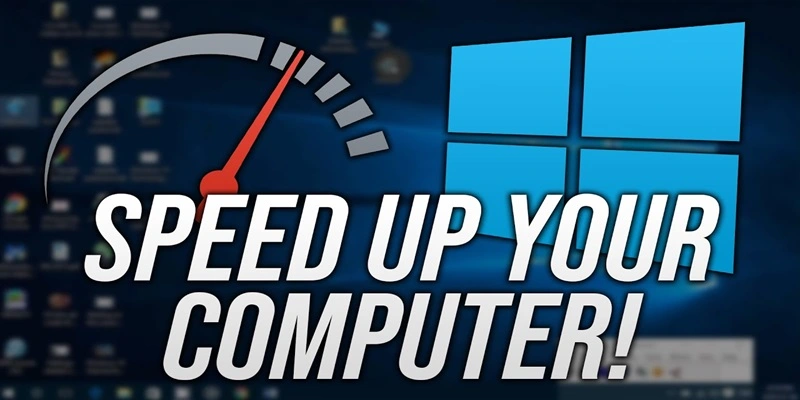The Dramatic Slowdown Saga
Imagine this: You’re ready to conquer the day, coffee in hand, optimism in the air. You power up your PC, anticipating the thrill of productivity, and then… the horror. Your once zippy machine has turned into a sluggish beast. Programs lag, windows freeze, and the spinning wheel of doom mocks your every move. It’s a scene straight out of a techie nightmare.
But fear not, fellow digital traveler! Every hero’s journey has its trials, and this is yours. Armed with a few savvy tips and tricks, you can restore your PC to its former glory and perhaps even surpass its old performance. So, let’s dive into the digital toolkit and get your PC roaring back to life.
Understanding the Culprits
Before we roll up our sleeves, let’s identify the villains causing your PC’s slowdown:
- Excessive Startup Programs: Programs that automatically launch during startup can bog down your PC.
- Outdated Software: Running older versions of software can slow things down significantly.
- Fragmented Hard Drive: Fragmentation causes your PC to work harder to access files.
- Malware and Viruses: These unwelcome guests can hog resources and slow down your system.
- Insufficient RAM: Not enough memory can cripple your PC’s multitasking abilities.
Now that we’ve identified the suspects, let’s tackle them one by one.
1. Trim Down Startup Programs
When your PC boots up, numerous programs might start running automatically, which can significantly slow down the process. Here’s how to streamline:
- Windows: Press
Ctrl + Shift + Escto open the Task Manager. Navigate to theStartuptab and disable unnecessary programs. - Mac: Go to
System Preferences > Users & Groups > Login Items. Select and remove items you don’t need at startup.
By trimming down these startup programs, you’ll notice a faster boot time almost immediately.
2. Uninstall Unnecessary Software
Over time, we tend to accumulate software that we no longer use. These programs can take up valuable space and resources. It’s time for a cleanup:
- Windows: Go to
Control Panel > Programs > Uninstall a Programand get rid of the ones you don’t need. - Mac: Open
Finder > Applications, and drag unwanted apps to the Trash.
Removing these programs frees up space and resources, giving your PC more breathing room.
3. Upgrade Your RAM
If your PC constantly struggles with multitasking, it might be time to consider a RAM upgrade. More RAM means your PC can handle more tasks simultaneously without slowing down. Here’s how to check your current RAM usage:
- Windows: Press
Ctrl + Shift + Escto open the Task Manager, then go to thePerformancetab. - Mac: Open
Activity Monitorand check theMemorytab.
If you find that your RAM is maxed out, consider adding more. It’s a relatively simple and cost-effective upgrade that can make a significant difference.
4. Run a Disk Cleanup
Over time, your hard drive collects a lot of unnecessary files. Running a disk cleanup can help clear out the clutter:
- Windows: Type
Disk Cleanupin the search bar and follow the prompts. - Mac: Use the built-in
Storage Managementtool by going toApple Menu > About This Mac > Storage > Manage.
This process will free up space and improve your PC’s overall performance.
5. Defragment Your Hard Drive
Data on a hard drive can become fragmented, meaning your PC has to work harder to piece together files. Defragmenting reorganizes this data, making it quicker to access:
- Windows: Type
Defragment and Optimize Drivesin the search bar and follow the instructions. - Mac: Modern Macs with SSDs do not require defragmentation.
Regularly defragmenting your hard drive can keep your PC running smoothly.
6. Update Your Software
Outdated software can be a significant drag on your PC’s performance. Ensure that your operating system, drivers, and applications are up to date:
- Windows: Go to
Settings > Update & Security > Windows Update. - Mac: Open
System Preferences > Software Update.
Keeping your software current ensures that you benefit from performance improvements and security patches.
7. Scan for Malware and Viruses
Malware and viruses can wreak havoc on your PC’s performance. Regular scans can help keep your system clean:
- Windows: Use
Windows Defenderor a third-party antivirus program. - Mac: Use
XProtector consider third-party options like Malwarebytes.
Running these scans regularly helps maintain a healthy, speedy PC.
8. Adjust Visual Effects
While fancy animations and effects can make your operating system look slick, they can also slow it down. Adjusting these settings can give your PC a speed boost:
- Windows: Type
Performance Optionsin the search bar, selectAdjust for best performance. - Mac: Go to
System Preferences > Accessibility > Display, and checkReduce motion.
These tweaks can make a noticeable difference, especially on older machines.
9. Consider an SSD Upgrade
If your PC still uses a traditional hard drive, upgrading to a Solid State Drive (SSD) can drastically improve performance. SSDs are faster, more reliable, and can breathe new life into an aging PC.
- Windows/Mac: Backup your data and follow installation guides specific to your PC model.
An SSD is one of the most impactful upgrades you can make, offering faster boot times, quicker file access, and an overall smoother experience.
10. Reinstall Your Operating System
As a last resort, a fresh install of your operating system can eliminate deep-seated issues and give you a clean slate:
- Windows: Go to
Settings > Update & Security > Recovery, then chooseReset this PC. - Mac: Restart your Mac, hold down
Command + Rto enter Recovery Mode, then chooseReinstall macOS.
This process is time-consuming but can be highly effective in restoring your PC’s performance.
Bonus Tips for Sustained Speed
To maintain your PC’s newfound speed, consider implementing these additional habits:
- Regular Backups: Regularly backup your important files to avoid data loss.
- Clear Browser Cache: Regularly clear your browser cache and cookies to keep your internet experience smooth.
- Disable Unnecessary Services: Review and disable services that you don’t need running in the background.
- Keep an Eye on Resource Usage: Regularly monitor your PC’s resource usage to catch any processes that are hogging too much power.
A slow PC can be a significant source of frustration, but with these tips and tricks, you can reclaim your machine’s speed and efficiency. From decluttering startup programs to considering hardware upgrades, each step brings you closer to a faster, more responsive PC.
Remember, regular maintenance is key. Keep your software up to date, run regular scans, and don’t hesitate to invest in upgrades when necessary. With a little effort, you can keep your PC running like new and say goodbye to those agonizingly slow moments.

